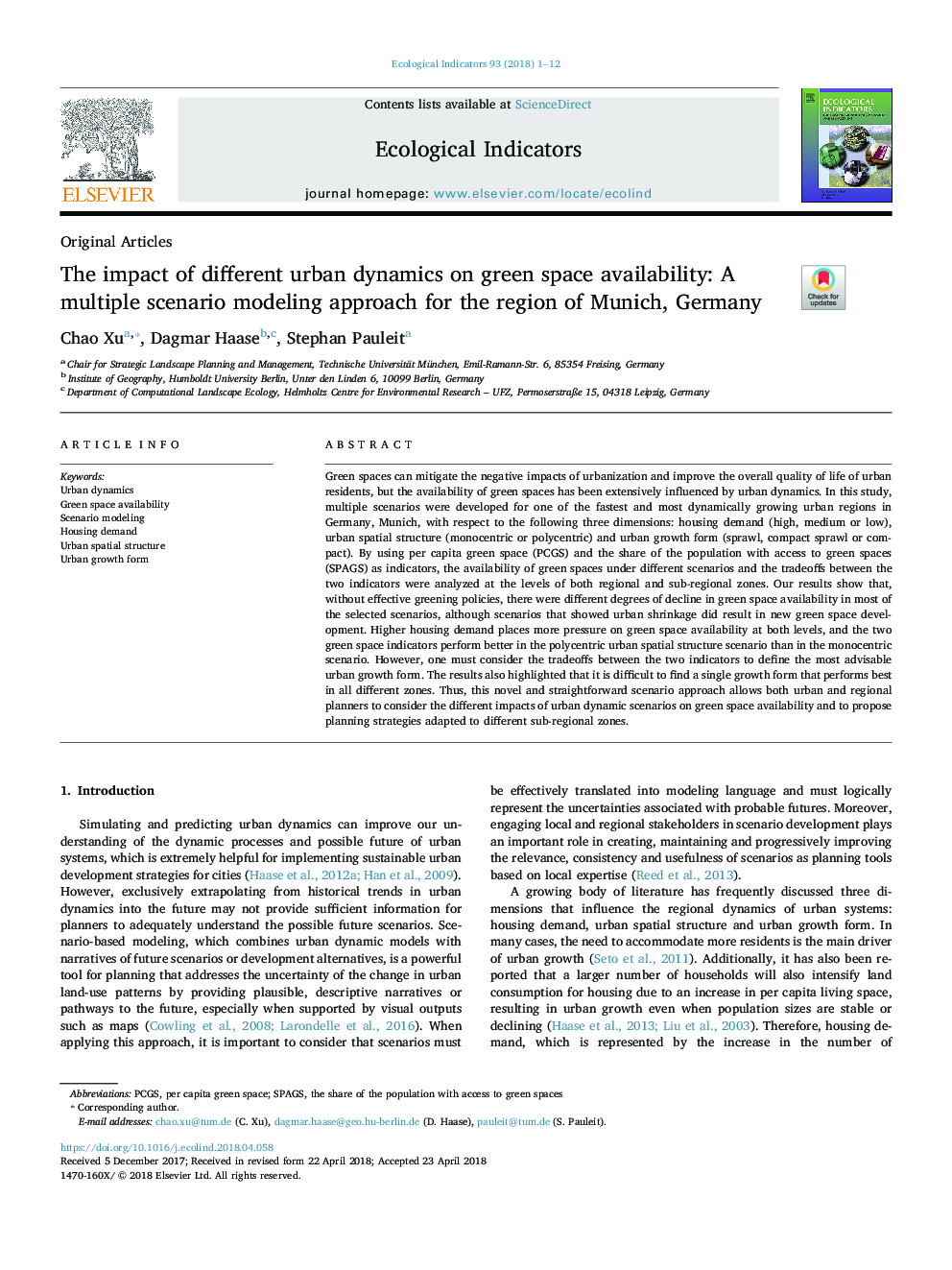| Article ID | Journal | Published Year | Pages | File Type |
|---|---|---|---|---|
| 8845085 | Ecological Indicators | 2018 | 12 Pages |
Abstract
Green spaces can mitigate the negative impacts of urbanization and improve the overall quality of life of urban residents, but the availability of green spaces has been extensively influenced by urban dynamics. In this study, multiple scenarios were developed for one of the fastest and most dynamically growing urban regions in Germany, Munich, with respect to the following three dimensions: housing demand (high, medium or low), urban spatial structure (monocentric or polycentric) and urban growth form (sprawl, compact sprawl or compact). By using per capita green space (PCGS) and the share of the population with access to green spaces (SPAGS) as indicators, the availability of green spaces under different scenarios and the tradeoffs between the two indicators were analyzed at the levels of both regional and sub-regional zones. Our results show that, without effective greening policies, there were different degrees of decline in green space availability in most of the selected scenarios, although scenarios that showed urban shrinkage did result in new green space development. Higher housing demand places more pressure on green space availability at both levels, and the two green space indicators perform better in the polycentric urban spatial structure scenario than in the monocentric scenario. However, one must consider the tradeoffs between the two indicators to define the most advisable urban growth form. The results also highlighted that it is difficult to find a single growth form that performs best in all different zones. Thus, this novel and straightforward scenario approach allows both urban and regional planners to consider the different impacts of urban dynamic scenarios on green space availability and to propose planning strategies adapted to different sub-regional zones.
Related Topics
Life Sciences
Agricultural and Biological Sciences
Ecology, Evolution, Behavior and Systematics
Authors
Chao Xu, Dagmar Haase, Stephan Pauleit,
